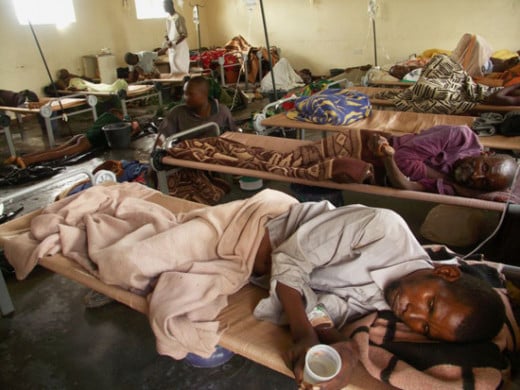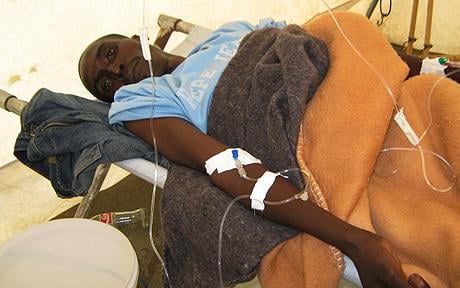Cholera As A Diarrheal Disease Of Infective Origin: Treatment Plan, Maintenance And Rehydration Therapy
Cholera Outbreak In Zimbabwe

Rehydration Therapy In Treating Cholera
Treatment
All cases with moderate or severe diarrhea should be hospitalized and treated properly, early replacement of gastrointestinal fluid and electrolyte losses, maintenance of nutrition and institution of antimicrobial drugs from the mainstay of treatment. Fluid replacement is done to correct the existing deficit of water and electrolytes (rehydration therapy) and it is continued to replace losses due to continuing diarrhea (maintenance therapy).
Rehydration Therapy
In mid and moderate cases, rehydration can be achieved with oral rehydration salt (ORS) solution. The WHO recommended ORS formula contains sodium (90mmol/liter), potassium (25 mmol/liter), chloride (80mmol/liter), bicarbonate (30mmol/liter) and glucose (111mmol/liter). It can be easily prepared in any household by dissolving sodium chloride, 3.5g sodium bicarbonate 2.5g potassium chloride, 1.5g, and glucose 20g in one liter of drinking water. Mothers are advised to give the fluid at frequent intervals to the children, thirst being the guideline for deciding the quantity and frequency. The efficacy of ORS has been widely tested and accepted. The glucose acts mainly as an agent to favour absorption of sodium. Glucose can be replace by twice the quantity of sucrose or even other household starches, but they are less efficient. Severe dehydration, with or without hypovolemic shock, should be treated with intravenous fluids to achieve satisfactory rehydration. Ringer lactate solution is the best commercially available preparation suitable for all age groups. This contains sodium lactate, sodium chloride, potassium chloride and calcium chloride. If Ringer lactate solution is not available, the next best is a solution containing sodium chloride 4g, potassium chloride 1g, sodium acetate 6.5g and glucose 10g per liter. The volume and rate of fluid required depends on the severity.
Fluid replacement should cover the losses in stools, vomitus and by evaporation. In severe cases, fluid balance should be checked hourly. Where facilities permit, replacement of electrolytes should be guided by laboratory estimations. As the dehydration is corrected, the child’s mental state improves, the acidosis clears, blood pressure comes up and urine is passed. It is ideal to achieve a urine flow of 50 to 60 ml/h. An intravenous line should be maintained till the child is well on the read to recovery.
Rehydration Therapy On A Cholera Patient

Infectious Diseases
Maintenance Therapy In Cholera
Maintenance therapy is intended to replace continuing losses of fluid and electrolytes and this follows the initial intensive regimen. The principle is to match the input to the output. Oral rehydration solution can be relied upon for maintenance therapy in moderate cases without severe diarrhea. The volume of ORS should be 100 mg/Kg body weight/day in mild cases. In moderate and severe cases, fluid should be given at the rate of 10 to 15 ml/Kg body weight/hour until diarrhea stops. Severe cases should be treated with intravenous fluids.
© 2014 Funom Theophilus Makama









